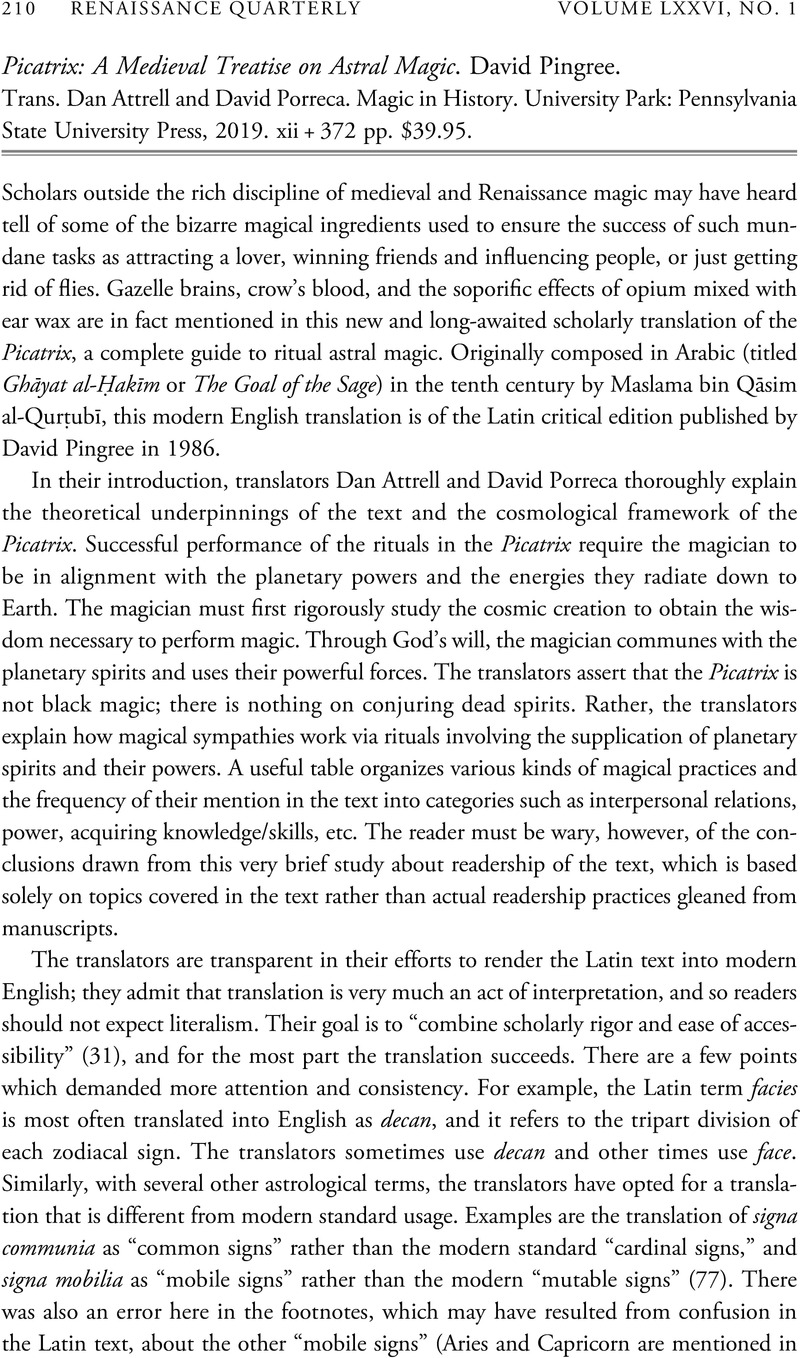No CrossRef data available.
Article contents
Picatrix: A Medieval Treatise on Astral Magic. David Pingree. Trans. Dan Attrell and David Porreca. Magic in History. University Park: Pennsylvania State University Press, 2019. xii + 372 pp. $39.95.
Review products
Picatrix: A Medieval Treatise on Astral Magic. David Pingree. Trans. Dan Attrell and David Porreca. Magic in History. University Park: Pennsylvania State University Press, 2019. xii + 372 pp. $39.95.
Published online by Cambridge University Press: 17 April 2023
Abstract
An abstract is not available for this content so a preview has been provided. Please use the Get access link above for information on how to access this content.

- Type
- Review
- Information
- Copyright
- Copyright © The Author(s), 2023. Published by the Renaissance Society of America



